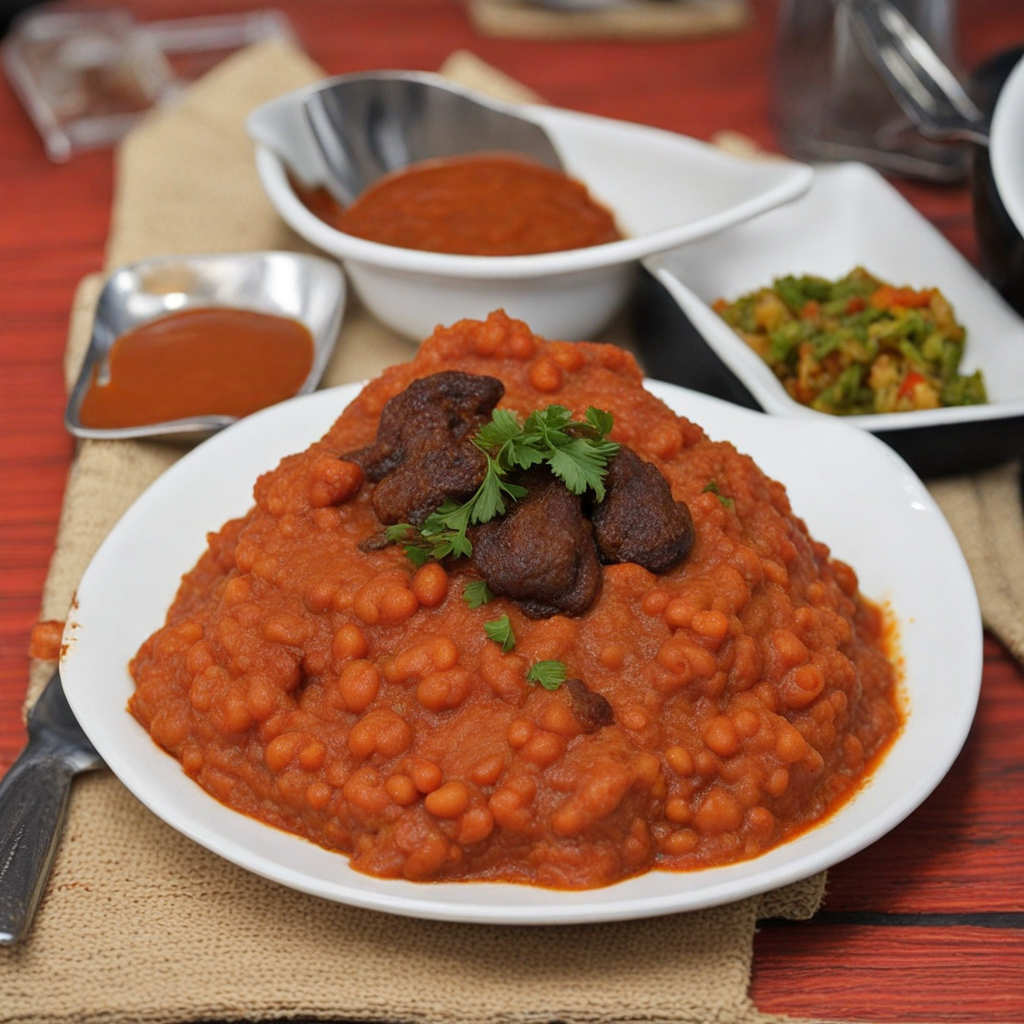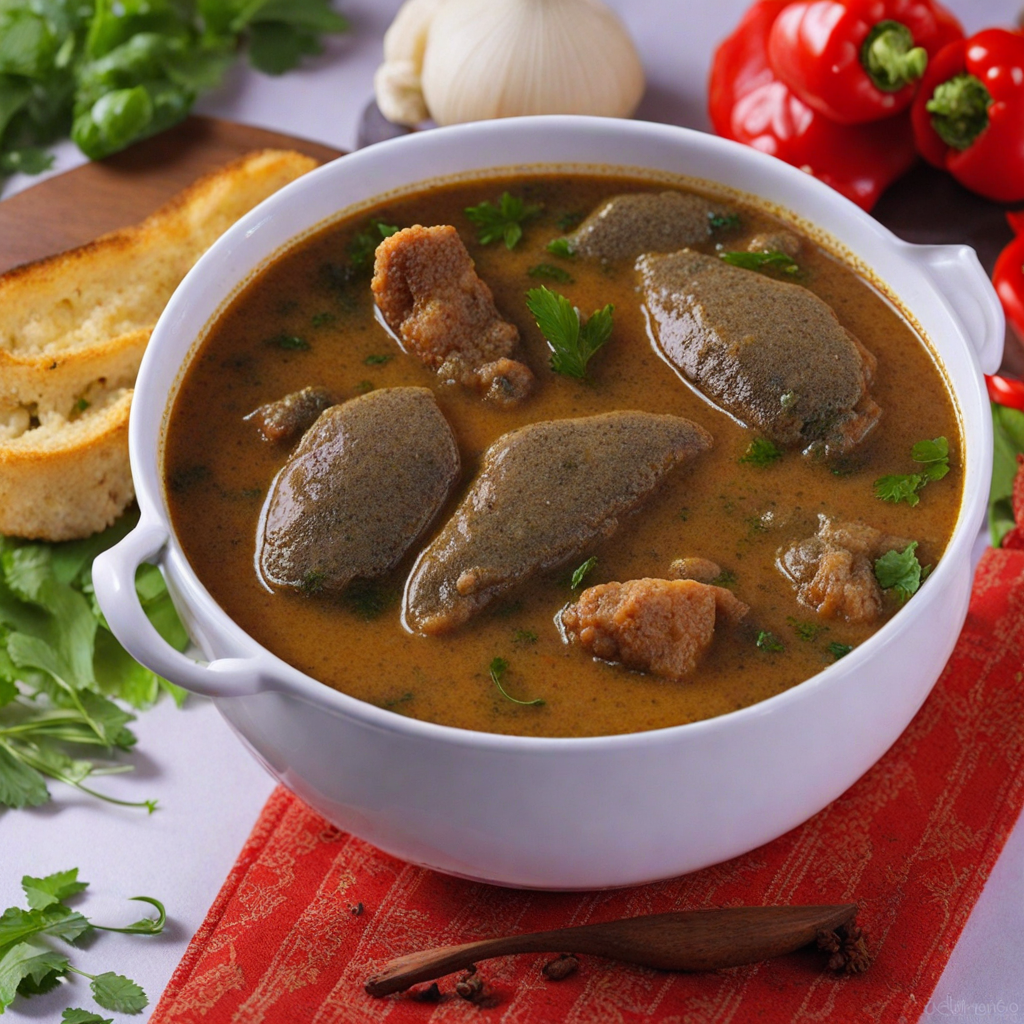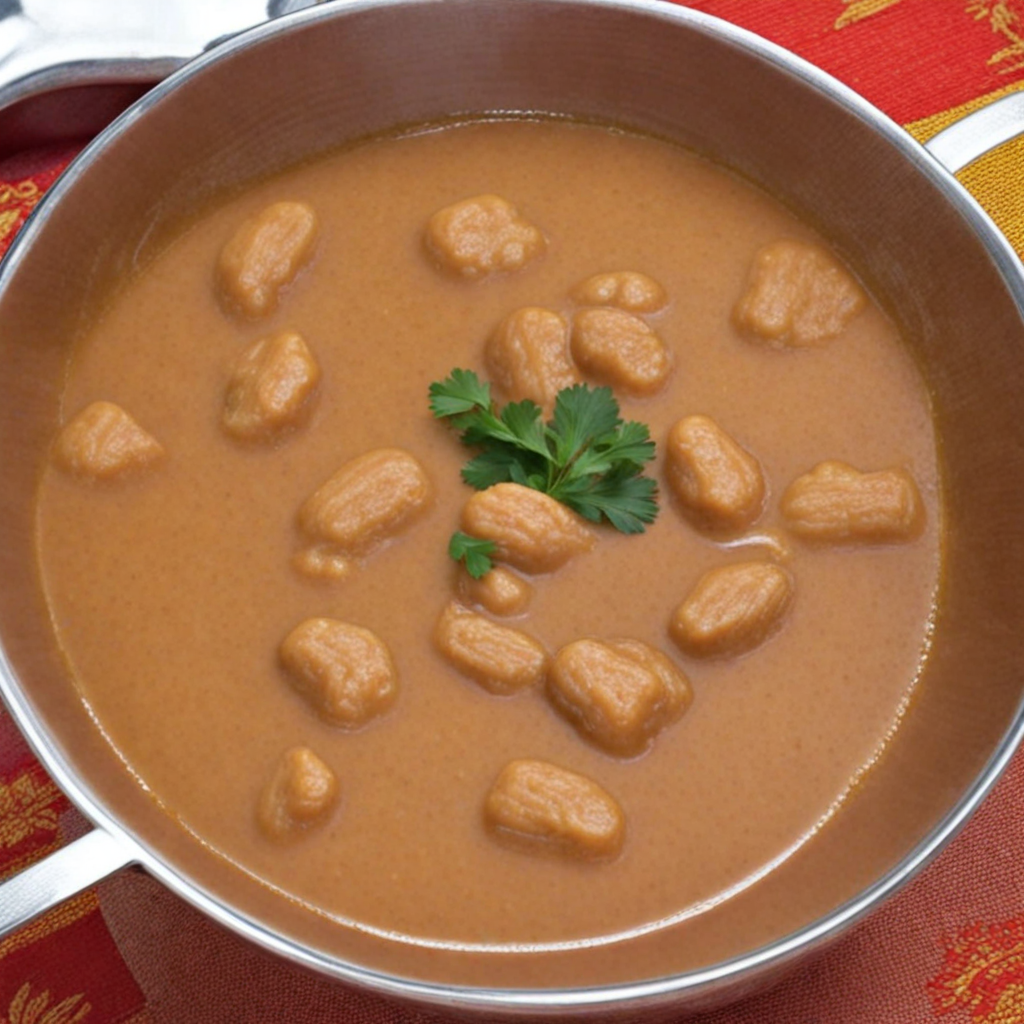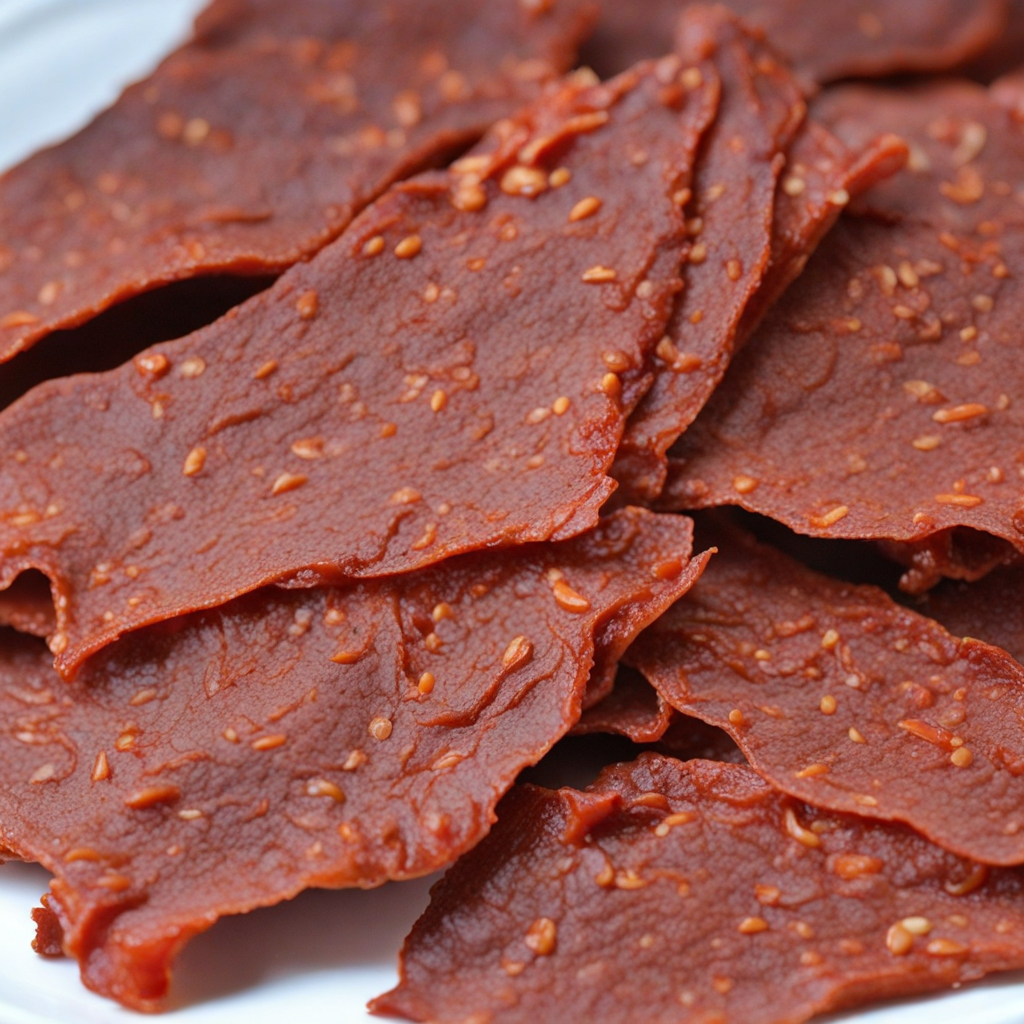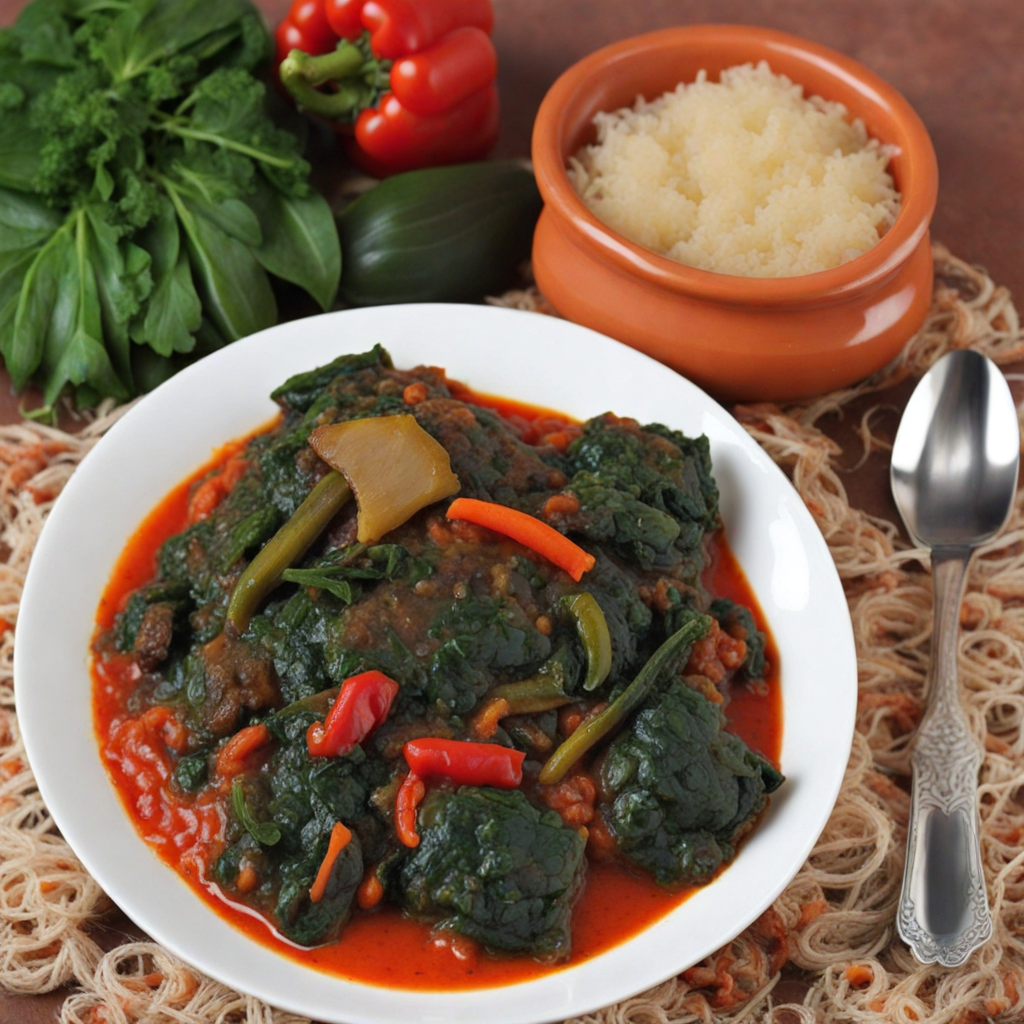Ewa Agoyin
Ewa Agoyin is a traditional Nigerian dish that offers a unique and delightful culinary experience, showcasing the rich flavors of the Yoruba culture. The dish primarily consists of well-cooked black-eyed peas, which are mashed into a smooth, creamy consistency. The beans are expertly prepared to retain their earthy flavor while being enhanced by a medley of spices and seasonings. The smoothness of the mashed beans serves as a perfect canvas for the accompanying sauce, which is typically made from a blend of palm oil, onions, and a variety of spices, creating a rich and aromatic flavor profile that is both comforting and satisfying. One of the standout features of Ewa Agoyin is its sauce, which is often prepared with a generous amount of spicy pepper sauce. This adds an exciting kick to the dish, balancing the creamy texture of the beans with a vibrant heat that tantalizes the taste buds. The sauce is usually prepared with a mix of fresh and dried peppers, giving it a depth of flavor that ranges from smoky to fruity, depending on the ingredients used. The combination of the creamy beans and the spicy sauce creates a harmonious blend that is both hearty and indulgent, making it a popular choice among food lovers. Ewa Agoyin is typically served with a side of fried plantains, rice, or even a warm, fluffy bread, allowing diners to enjoy a variety of textures and flavors with each bite. This dish embodies the essence of Nigerian cuisine, highlighting the importance of communal eating and sharing meals with loved ones. The simplicity of the ingredients, combined with the complexity of the flavors, makes Ewa Agoyin a must-try for anyone seeking to explore the vibrant and diverse world of Nigerian food.
How It Became This Dish
Ewa Agoyin: A Culinary Journey through Nigerian Heritage Ewa Agoyin is a beloved dish originating from southwestern Nigeria, particularly among the Yoruba people. This remarkable combination of black-eyed peas, known as "ewa," and a spicy, palm oil-based sauce, "agoyin," not only represents a delicious addition to the Nigerian culinary landscape but also weaves a rich tapestry of cultural significance, agricultural heritage, and communal identity. Origins and Ingredients The primary component of Ewa Agoyin is the black-eyed pea, or "Ewa," which has long been a staple in West African cuisine. Archaeological evidence suggests that black-eyed peas were cultivated in West Africa over 5,000 years ago, making them a crucial part of the region's agricultural history. The Yoruba people, among others, embraced this legume for its versatility, nutritional value, and ability to thrive in the diverse climates of Nigeria. The dish is typically prepared using dried black-eyed peas that are boiled until soft, then mashed or pureed to create a creamy consistency. The accompanying "agoyin" sauce is where the dish truly shines. This rich, vibrant sauce is made from palm oil, peppers, onions, and a variety of spices. The use of palm oil, which has been a significant element in West African cooking for centuries, not only imparts a deep, earthy flavor but also reflects the region's agricultural practices, with palm trees being cultivated for their fruits and oils. Cultural Significance Ewa Agoyin is more than just a meal; it is a dish steeped in cultural significance and communal identity. Within the Yoruba culture, food serves as a medium for social interaction, and Ewa Agoyin is often enjoyed during communal gatherings, celebrations, and family events. Vendors selling Ewa Agoyin can be found on bustling streets in cities like Lagos, where the dish has become a quintessential part of the urban food scene, bringing together people from diverse backgrounds. The dish embodies the warmth and hospitality of the Yoruba people. Sharing a plate of Ewa Agoyin often signifies camaraderie and kinship, with family and friends gathering around to enjoy the meal. The act of eating together fosters social bonds and strengthens communal ties, making Ewa Agoyin a symbol of unity. Ewa Agoyin also finds a place in Yoruba folklore and oral traditions. It is often mentioned in songs and proverbs, highlighting the dish's role in cultural storytelling. For many, the preparation of Ewa Agoyin is passed down through generations, with mothers teaching daughters the art of making the perfect sauce, ensuring that the recipe evolves while retaining its traditional roots. Evolution Over Time As Nigeria has undergone changes in its socio-economic landscape, so too has Ewa Agoyin. The dish has adapted to modern culinary trends while remaining true to its origins. The rise of street food culture in urban areas has contributed to the popularity of Ewa Agoyin, making it accessible to a broader audience. Vendors often serve the dish with an array of accompaniments, including fried plantains, stewed meats, or fried fish, further enhancing its appeal. In recent years, the growing interest in plant-based diets has also brought Ewa Agoyin into the spotlight. With a focus on health and sustainability, more people are turning to traditional dishes that are both nutritious and environmentally friendly. The black-eyed pea is rich in protein, fiber, and essential nutrients, making Ewa Agoyin an attractive option for health-conscious consumers. Social media has played a crucial role in the resurgence of interest in traditional foods like Ewa Agoyin. Food bloggers and influencers often showcase the dish, highlighting its vibrant colors and mouthwatering flavors. This exposure has not only increased its popularity among younger generations but has also sparked a renewed appreciation for Nigerian cuisine on a global scale. Regional Variations and Adaptations While Ewa Agoyin is closely associated with the Yoruba people, other ethnic groups in Nigeria have their adaptations of the dish. In the northern regions, for example, variations may include different spices and cooking methods, reflecting the diverse culinary practices across Nigeria. This regional adaptation showcases the flexibility of Ewa Agoyin, allowing it to transcend cultural boundaries while still remaining a beloved dish. Additionally, the increasing fusion of culinary traditions in Nigeria has led to creative interpretations of Ewa Agoyin. Chefs are experimenting with ingredients and techniques, incorporating elements from other cuisines to provide a contemporary twist on the dish. This evolution reflects the dynamic nature of Nigerian cuisine, where tradition and innovation coexist. Conclusion: A Dish of Unity and Celebration Ewa Agoyin is more than just a meal; it is a cultural emblem that encapsulates the essence of Nigerian heritage. From its origins in the agricultural practices of the Yoruba people to its role in contemporary street food culture, the dish continues to evolve while remaining deeply rooted in tradition. As people around the world become increasingly interested in global cuisines, Ewa Agoyin stands as a testament to the richness of Nigerian food culture. It invites culinary exploration and fosters a sense of community, making it a dish worth celebrating. In a world that often finds itself divided, Ewa Agoyin serves as a reminder of the power of food to bring people together. Whether enjoyed at a bustling street stall in Lagos or prepared in the comfort of home, this dish embodies warmth, hospitality, and the shared joy of a meal—truly a unifying force in the tapestry of Nigerian culture.
You may like
Discover local flavors from Nigeria


